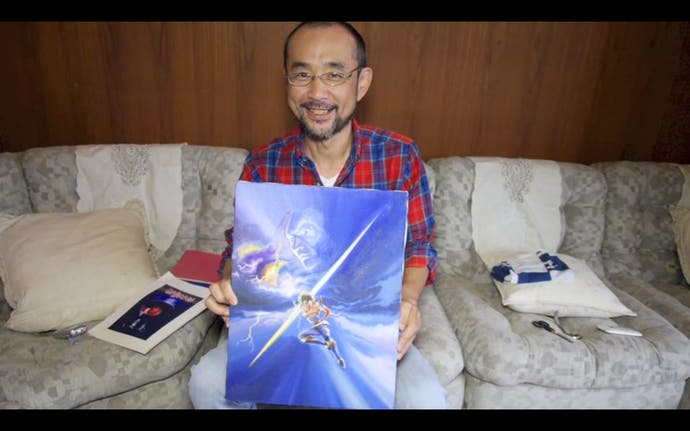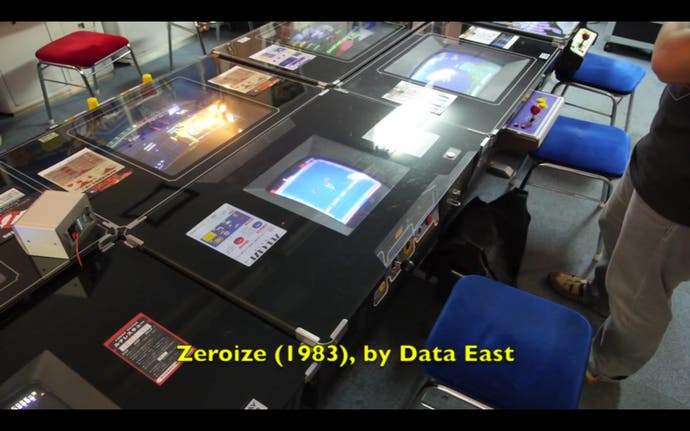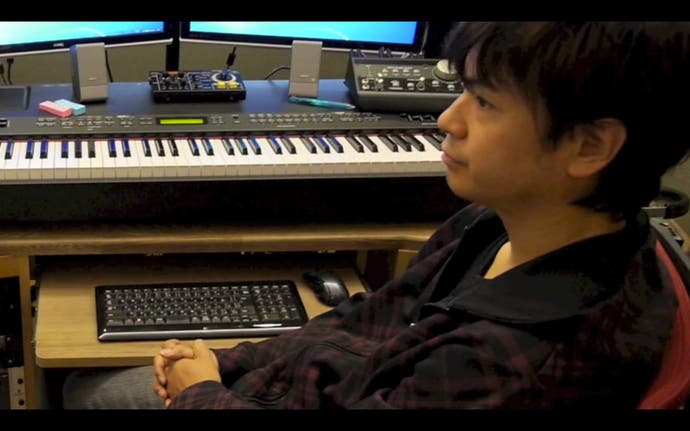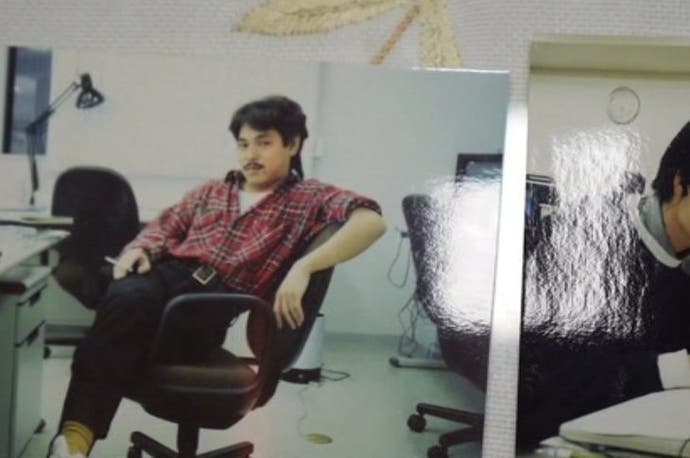The Untold History of Japanese Game Developers DVD review
John Szczepaniak's sentimental journey into gaming's past.
John Szczepaniak, a man with the surname equivalent of a Rubik's cube, is a contributor to print publication Retro Gamer and game industry website Gamasutra. As a journalist with a like-minded affinity for gaming's historical pathways, his recently successful Kickstarter bid to unearth the secrets of Japan's game development past is a project after my own heart.
Although Szczepaniak now finds himself embroiled in a controversial libel case with a translator, the project reached completion undeterred. With the book now released, his DVD companion - a four-hour, two-disc marathon featuring interviews and extracurricular footage of his ten-week hunt for Japan's developers of yesteryear - is available for purchase exclusively from website Hardcore Gaming 101.
With production limited to only 500 pieces, presentation-wise you might expect a little more polish for your £40; the bubble mailer is not quite fit for long-distance carriage, my box arriving in several shards. Thankfully, the discs being held in place with sticky tape and a neatly folded layer of bog roll ensured that I was able to view the contents.

Like the crude cover illustration, the production itself doesn't exactly scream bells and whistles. Graphics and text look like iMovie's basic toolset and the feature is more amateur travelogue than bona fide documentary. Certain sequences lack relevance and pacing problems persist throughout: there's a disproportionate amount of time spent playing hard-to-decipher PC-88 games, some questionable dallying on erotic material and an embarrassing compilation of photo cutaways to Tokyo Game Show booth girls that veers into full-nerd territory. Although it's never boring, the way the film ambles over lesser areas like guide book collections suggests more aggressive editing and whittling the material down to one disc may have boosted the engagement factor.
Szczepaniak does note on his Kickstarter dialogue that he isn't a professional video producer, but that doesn't change the fact that this is a product with a price tag. Anyone expecting a feature as slick as King of Kong or Chasing Ghosts need realign their expectations. My toe-curling almost excavated a portion of carpet when one of Japan's most famous studios is referred to as 'Capcon' in an early typo, and it's difficult to muster much enthusiasm for Szczepaniak's recollection of presenting two strange women with his business card in Kyoto - a trend that peaks at disc two's 53rd minute, when we're enthusiastically shown a spy snap of a "pretty girl" sitting in an adjacent plane seat. I winced. It's not just totally irrelevant to the material, but reinforces the stigma that all male gaming hobbyists turn into dribbling halfwits when in the vicinity of real live women.
Thankfully, these transgressions are largely superfluous in light of the primary content: a mission to fulfil a dream on behalf of the hardcore gaming community. One glance at the roll call on the back of the box is enough to set a classic gamer's heart aflutter, and in only 20 minutes we're sitting with Strider director Kouichi Yotsui as he shows off hand-painted artwork and design treatments for unreleased projects. It's so captivating to see the people responsible for gaming's formative years that you're often on the edge of your seat just trying to get closer to the screen. The rawness of the production only serves to make these moments more provocative, the handheld camera prying into the living rooms and offices of once pioneering figures, at their personal artifacts and unseen work.

Szczepaniak is a comfortable, likeable guide who knows his field. Although you wouldn't mind some more pressing questions (and subtitles for less audible conversations), seeing Kouichi Yotsui absolutely suck at his own Strider sequel, Yoshiro Kimura's charming creative personality, Streets of Rage musician Yuzo Koshiro's early home-made games, and the reactions of interviewees as they're presented with quintessentially British software gifts is heart-warming stuff. Pitman creator Yukata Isokawa's emphatic emotional response to receiving a long-lost magazine featuring his original source code is particularly memorable.
With such an impressive catalogue of gaming luminaries, it's unfortunate that the film makes little attempt to educate the viewer about its various vignettes. You often only get the most cursory of background information, flitting between something mild to chew on, like Toku Hidaka's rise to prominence before programming at Enix, to next to nothing at all. If you don't know your Human Entertainments or Love-de-Lics, Raanbers or Shubibinmans, you'll be none the wiser when the credits roll. Additionally, if you're unfamiliar with the PC-88 - a Japanese computer system from the early 80s - be prepared for some bewilderment; it's a field that Szczepaniak appears to have a special affection for and occupies a lot of screen time.
While it's a production aimed squarely at those already in the know, that shouldn't be a deterrent for people with an interest in Japan's golden era of gaming. Where it fails as an educational piece for novices - and often assumes in subtitles that you'll be purchasing the book for the full lowdown - it still succeeds as a shoulder-rubbing exercise with special resonance for the classic gaming community. That said, for every delicious slice of information - a design document here, a set of photos there, and of course seeing and hearing the men who gave birth to the classics of yesteryear - there is a lack of exposition in the interviews and there are several frustrating missed opportunities.

Being told you're about to witness one of the rarest PC-Engine CD-Rom titles in existence - an in-house graduation game written by and provided to students at Hudson Soft - only to be shown still photos accompanied by unrelated audio because they couldn't make the capture software work, is disappointing to say the least. Likewise, when there's a table stacked with 1980s camcorder tapes of Yu Suzuki travelling Europe for OutRun research... Well, it's the sort of thing you'd do absolutely anything to get some footage of, short of debasing yourself in public - and maybe that too. Sadly we're left empty-handed and more than a little teased.
It's undeniable that Szczepaniak's jaunt will leave a mark on what we know about gaming's past, but if you're expecting groundbreaking world firsts, you may feel short-changed. There are points of great interest and it's nice to see old Taito staff members visually recalling graphics workstation setups and unreleased game ideas on a whiteboard - but there's nothing quite on the level of Shenmue's Saturn prototype footage. Of course, the DVD is just a smaller arm of a broader project, with the majority of titillating material held back for the book. And while it may not grip you in every scene, some of what's here is still gold. Seeing Cybernator for Super Nintendo's concept art, private Capcom staff photos from the Strider period, the original Monster World 4 diorama used for the game's Mega Drive cover, an early MSX prototype, and Hokkaido's derelict Hudson Soft hardware laboratory are all wonderful moments.
Take it for what it is: a collection of clips that occasionally fascinate and inspire, and occasionally frustrate with their lack of depth and background information. Either way, it's a valid document, captured on film, of some of the people who helped to build today's industry.

